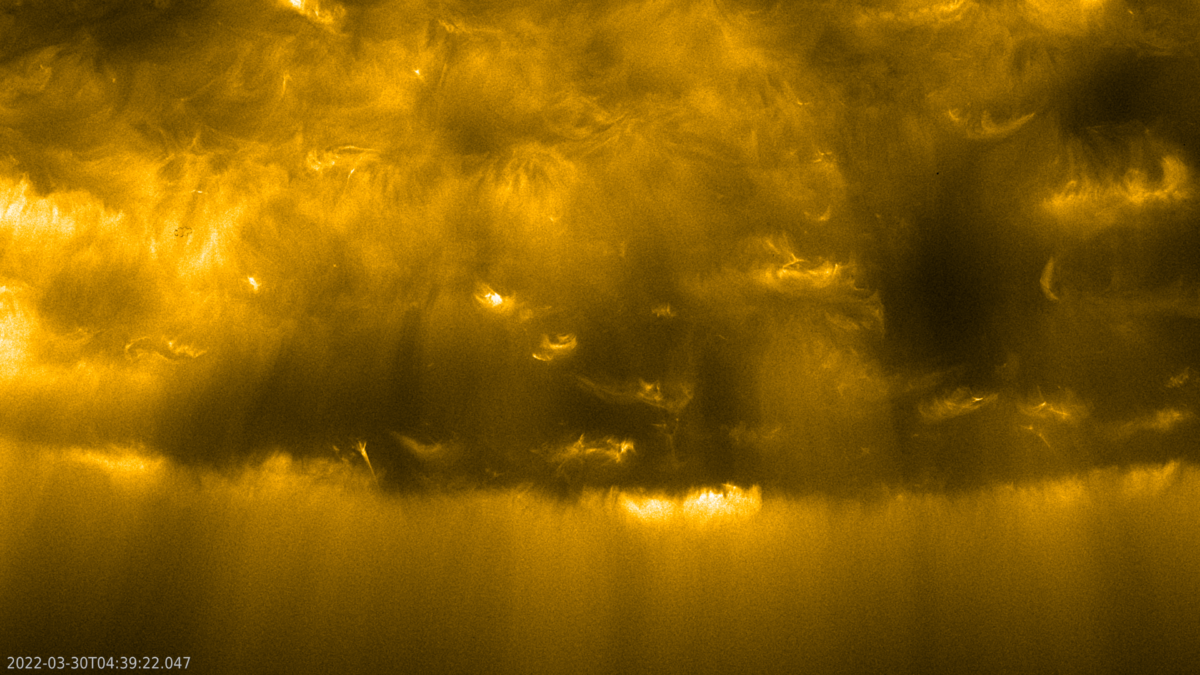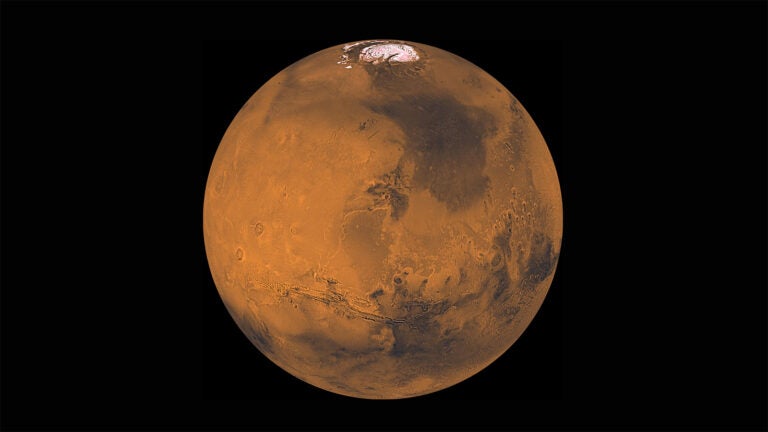
Since the 1950s, scientists have known that the Sun emits a stream of particles in a vast wind, carrying away an Earth’s worth of mass every 150 years. This wind of protons sweeps by comets and sculpts their tails into million-kilometer wind socks. Near Earth’s orbit, the solar wind fills a sugar cube’s worth of volume with five to 10 particles traveling outwards from the Sun at speeds between 559,000 and 1.57 million mph (250 and 700 kilometers per second).
Over the past several decades, scientists have learned much about this wind, including what drives it. Satellite observations have revealed myriad small flares near the Sun’s surface, when the star’s magnetic field lines wind up and snap like rubber bands. This release of energy can heat the Sun’s outer atmosphere (or corona) to roughly 2 million degrees Fahrenheit (a million degrees Celsius), propelling the solar wind out into space.
Some mysteries of the wind, however, have stubbornly remained. Among them is a temperature anomaly: The laws of physics dictate that as the wind departs the Sun, expanding outward, it ought to slow down and cool off. But observations indicate that the wind doesn’t cool off as much as it should. The energy balance was off — some unaccounted-for source is acting like a warming zone on a stove, keeping the solar wind from cooling as much as expected.
An analysis by Yeimy Rivera at the Harvard-Smithsonian Center for Astrophysics in Cambridge, Massachusetts, and her colleagues, published today in Science, suggests that this energy conundrum can be solved. The key ingredient is waves that ripple outward through the solar wind, and the energy they transport and release.
Making waves
We all know about sound waves from everyday life. A good, strong sound wave over 150 decibels (jet engine or firecracker) carries enough energy to physically rupture your eardrums. Common sound waves are carried by ordinary gas or even solid matter.
But when a plasma is involved, electrical currents and magnetic fields can course through the gas, creating different kinds of waves. Plasmas can be set into motion, their charged particles bouncing back and forth under the influences of electricity and magnetism. Plasma waves come in many forms, but one type can be visualized as the magnetic field lines vibrating, like a guitar string being plucked. These oscillations are called Alfvén waves in honor of Hans Alfvén, who received the 1970 Nobel Prize in Physics for discovering them.
Scientists have long wondered whether Alfvén waves could explain the mysterious heating of the solar wind. Perhaps the natural dissipation of Alfvén waves release energy into the solar wind, like ocean waves crashing ashore.
Rivera and her colleagues were able to test this hypothesis with data from two satellites that orbit and monitor the Sun: NASA’s Parker Solar Probe and the European Space Agency/NASA Solar Orbiter mission. In February 2022, this duo reached a rare alignment, with the Parker Solar Probe near the Sun — inside its outer corona — and Solar Orbiter farther out and directly downwind, near the orbit of Venus. This allowed scientists to observe the arrival of Alfvén waves at the Parker Probe and then observe those same waves as they passed by Solar Orbiter, 45 hours later.
The Parker Solar Probe detected large Alfvén waves called switchbacks, in which the local magnetic field produced by sources closer to the solar surface rapidly changes direction. But by the time they reached Solar Orbiter, these waves carried much less force. Comparing the data, the team calculated that the dissipated energy matched the predicted heating of the solar wind.
With this discovery, it may well be that the overall dynamics of the solar wind have been worked out. Nature, however, often accomplishes the same ends using many different approaches, so what has worked in one particular corner of the solar wind may not apply everywhere in a system as vast as the solar system.









